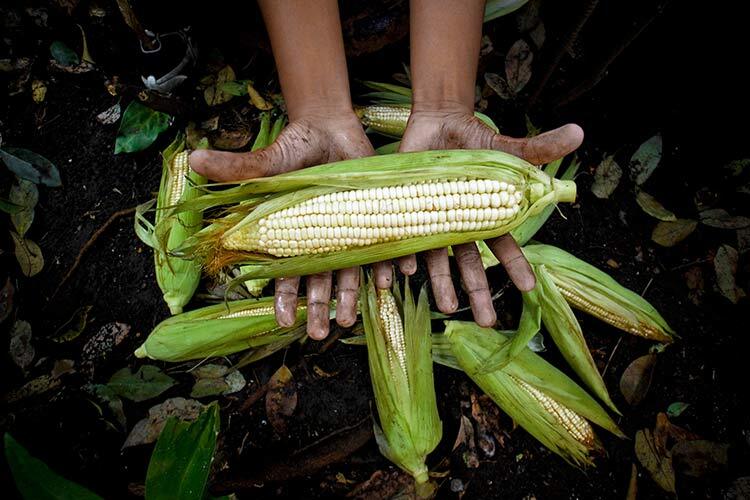In March of this year, a man died from blunt force trauma and burns after being lynched by dozens of residents in Tuxtepec, Oaxaca. The crowd had accused him of sexually abusing a minor.
A year earlier, a woman lost her life in a similar act of mob violence in Taxco, Guerrero. Locals dragged her and her two children out of their home and beat her with fists, kicks, and wooden sticks. She was accused of being involved in the disappearance and murder of an eight-year-old girl. In both cases, the community didn’t wait for law enforcement to act—they took justice into their own hands.
Historically, lynchings have been part of Mexico’s social landscape, with communities reacting violently against alleged criminals. However, these events tend to backfire, often leading to a heightened sense of insecurity and even a spike in certain crimes, explains Sandra Ley, political scientist and Distinguished Professor at the School of Social Sciences and Government at Tec de Monterrey.
Throughout her career, Ley—a member of the Faculty of Excellence initiative—has focused on studying the effects of organized crime in Mexico, particularly how ordinary citizens respond to widespread violence and insecurity.
Currently, she is working with colleagues from Tulane University and UC Davis on a project aimed at understanding the nature and root causes of this social phenomenon—lynching as a form of vigilante justice that differs from the actions of more organized groups like the so-called self-defense forces.
As part of their research—and in response to the lack of official records and reliable sources—they created the Lynchings in Mexico (LEM) database. It includes detailed information on 2,032 incidents between 2009 and 2022. Drawing from this data, the team is developing a series of papers and analyses exploring the triggers behind the violence, the role and response of authorities, the profiles of the victims, and the broader consequences of mob justice.

The Nature and Causes of Lynchings in Mexico
Lynchings have increased over the past decade. According to the database, there was an upward trend from 2009 to 2018, followed by a steady decline. Still, more than 100 incidents occurred each year between 2019 and 2022. Ley points out that this decrease may be linked to the pandemic, which disrupted social dynamics and made it harder for communities to mobilize.
The rise in lynchings has mirrored the surge in criminal activity across various regions of the country. These events have been most frequent in central Mexico—in states like Estado de México, Puebla, Mexico City, Hidalgo, and Morelos—as well as in parts of the south, including Yucatán, Chiapas, and Oaxaca.
Several factors contribute to the conditions that allow lynchings to occur: a widespread sense of vulnerability among citizens; feelings of desperation, anger, and collective exhaustion; a deep mistrust of authorities due to their slow or ineffective response to crime; and strong social capital or organized community networks—such as neighborhood or religious groups—that enable collective action.
The main crimes that drive communities to carry out lynchings are various forms of theft—which account for more than half of the cases. Next come kidnappings, followed by homicides, and finally, crimes involving sexual violence. However, Ley notes that the victims are not always guilty of the crimes they’re accused of.
“We’re talking about alleged wrongdoers because, in most cases, we don’t have verified evidence or concrete information proving they actually committed a crime. Lynchings aren’t necessarily based on facts—studies have shown that rumors often play a big role in how these events unfold and take shape.”
When it comes to the involvement of local authorities and police, the LEM reveals that only a little over 50% of lynching cases include any form of intervention. And when officers do intervene, it’s usually to stop the event or to arrest the victim. However, there are instances where police merely stand by as onlookers, and there have even been cases where they themselves become targets of the mob.
Although most lynchings do not end in death, at least a quarter of them result in the victim being killed.
For this project, Ley is collaborating with researchers Hannah Baron from Tulane University, and Lauren Young and Haley Daarstad from UC Davis. The development of the LEM involved an extensive review and analysis of national and local newspapers from across the country.
“We hope to make the database publicly available through Tec de Monterrey, as part of the new Democracy and Governance Initiative at the School of Social Sciences and Government—and to release it alongside a policy brief that can help spark public dialogue on the issue.”
Lynchings Fail to Make Communities Safer
Mexico’s National Human Rights Commission defines lynchings as unlawful acts that undermine democratic institutions violate human rights, and—rather than serving as a form of justice—ultimately weaken or obstruct access to true justice.
One of the main goals of this research is to examine how lynchings affect people’s sense of security. Early findings suggest their impact is limited and short-lived. They may create a fleeting sense of control or protection, but in the medium to long term, they fail to build trust that violence will decrease.
“Lynchings may give the impression that something is being done to curb crime,” says Ley, “but they also highlight the absence of the state. People don’t feel safer when they see their community taking matters into its own hands.”
In that context, the lack of a police presence in nearly half of all lynching events—or the limited role they play when they do show up—does little to improve public perception of law enforcement. It may only deepen mistrust toward the authorities.
Preliminary data from the study also suggests that lynchings do not have the intended effect of reducing crime. In fact, researchers observed an increase in certain types of common crimes in some regions following these events.
For instance, in municipalities with higher rates of crimes, such as car theft, overall crime levels tended to be higher. However, when it comes to high-profile crimes like homicides, there was no significant effect or noticeable change.
According to Ley, addressing the phenomenon of lynching requires strengthening the rule of law through more reliable, effective, and robust institutions. It also calls for building stronger partnerships between society and the state and a broader public conversation about the long-term consequences of citizens taking justice into their own hands.
“There’s an important conversation we still need to have about the consequences of these events—and that’s where we hope to share our findings,” Ley says. “We need to begin opening up those discussions with real evidence. Through this re
Did you find this story interesting? Would you like to publish it? Contact our content editor to learn more at marianaleonm@tec.mx

















